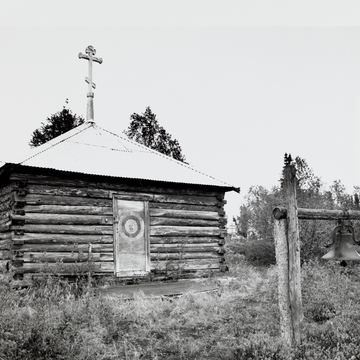Although the date of construction of this church is not known, Saints Constantine and Helen Chapel is unique among surviving Alaskan Russian Orthodox churches. Athapaskan Indians founded Lime Village in 1917 on the Stony River, a tributary of the Kuskokwim, after a forest fire destroyed the villagers' previous home about 20 miles upriver. This chapel was either built at that time, with a new roof added in the 1940s, or was perhaps entirely reconstructed in the 1940s.
The pyramidal-roofed church is square in plan, measuring 17 feet along each exterior wall, constructed of round logs, square notched at the corners. On the interior, the sanctuary is not divided from the nave; instead, a sheet is stretched in front of the altar when the services call for this privacy. There is no iconostas as such; icons, apparently saved from the previous village, are attached to the rear wall. This church does not have any sort of vestibule, as entry is directly into the nave.
This unusual one-cell church may represent the earliest type of church built. As villages grew, a sanctuary would be added at one end, the altar moved into it, and a vestibule added to the other end. By its very simplicity, the Chapel of Saints Constantine and Helen may be most informative of long-past customs.

